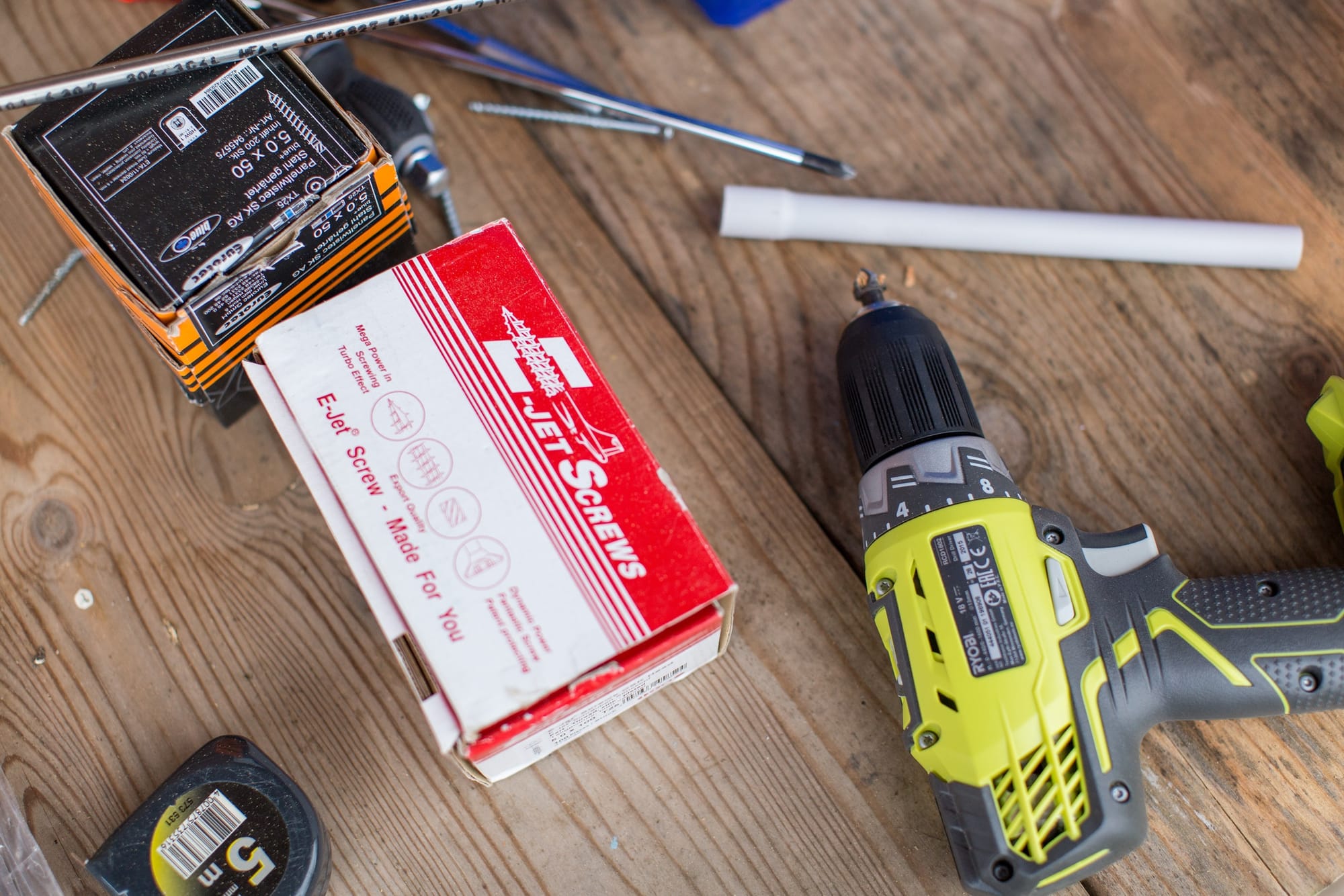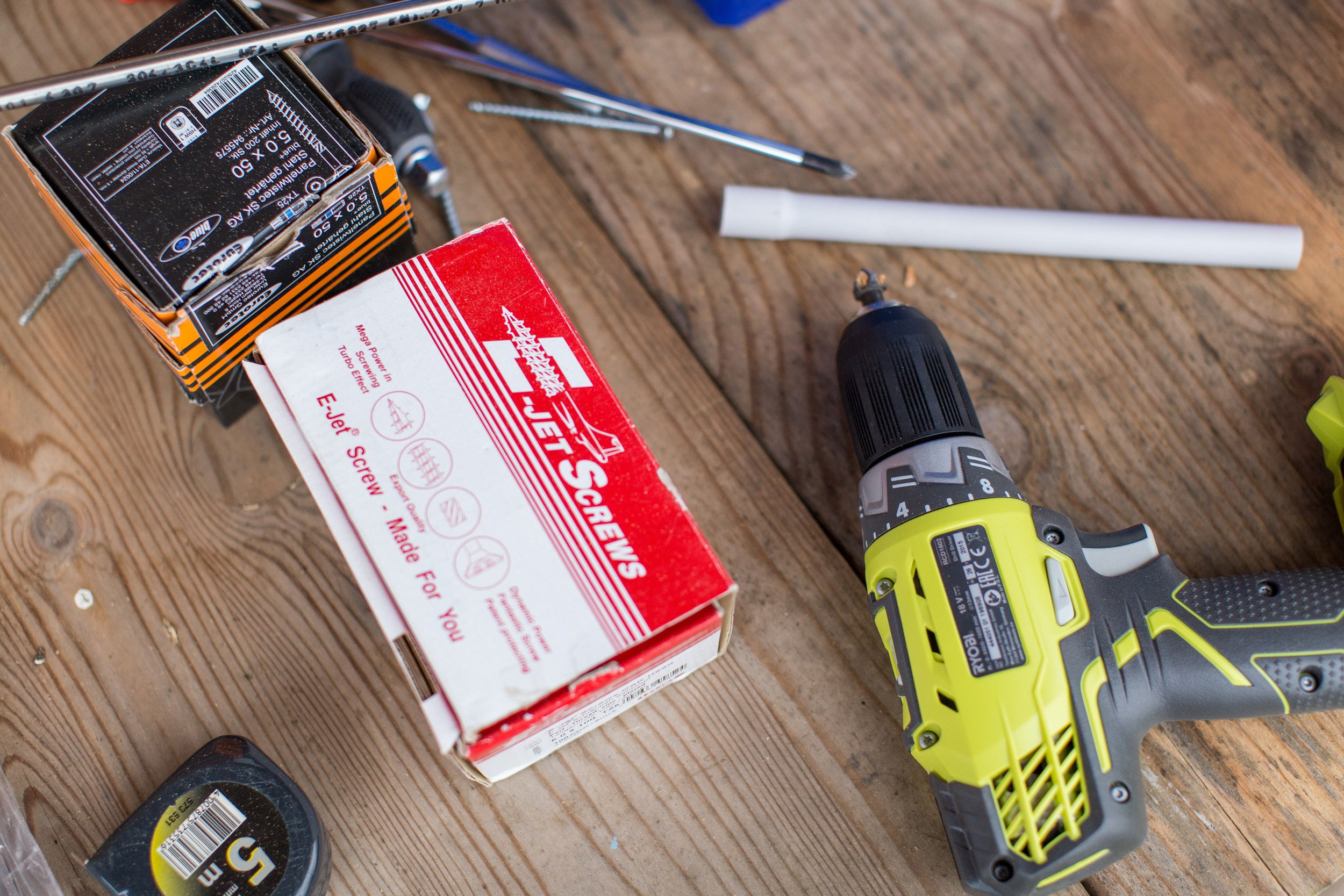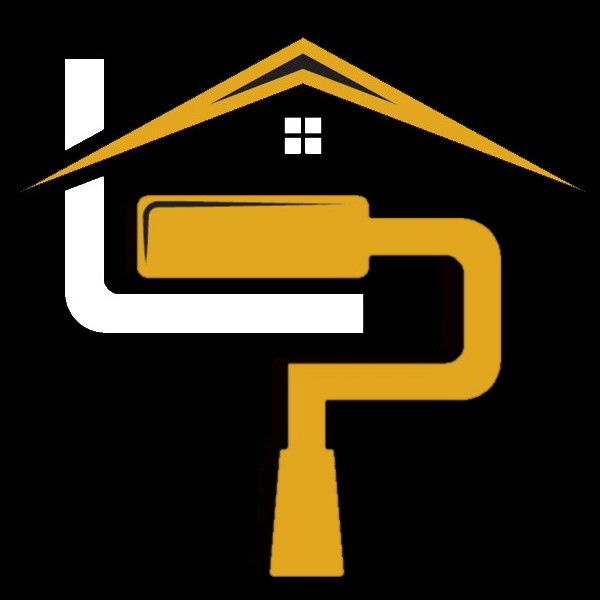Drywall 101: A Comprehensive Guide for Beginners

Drywall Guide for Beginners
Welcome to Lightmen Daily, your go-to source for all things construction! Today, we're diving deep into the world of drywall – a topic that might seem mundane at first glance, but is absolutely essential in the construction and renovation of modern buildings. Whether you're a DIY enthusiast, a professional in the making, or simply curious, this guide is tailored to provide you with a thorough understanding of drywall from the ground up.
"I am part of your house but not of your home, I’m involved in a build, but I’m not a stone. You can cut and shape me, but I'm not wood. And fixing me right can change your mood. What am I?"
See answer below
Understanding Drywall: A Key Component in Modern Construction
Drywall, also widely known as plasterboard or gypsum board, plays a pivotal role in modern construction. This versatile material, used in constructing interior walls and ceilings, is a staple in both residential and commercial building projects. Its significance in the construction industry is due to a combination of factors including fire resistance, ease of installation, and cost-effectiveness, making it an integral part of contemporary building practices.
Composition and Characteristics of Drywall
- Gypsum Core: At the heart of drywall is gypsum plaster, a naturally occurring mineral. Gypsum's unique properties, such as fire resistance and moisture absorption, make it ideal for interior construction.
- Papered Panels: The gypsum plaster is compressed between two thick sheets of paper, forming panels. These panels can be easily cut and installed, allowing for rapid construction of walls and ceilings.
- Versatility and Efficiency: Drywall's ease of installation has made it a preferred choice over traditional lath and plaster methods. It can be quickly mounted on frames, screwed in place, and finished with joint compound, streamlining the construction process significantly.
The History and Evolution of Drywall
The rise of drywall as a dominant force in the construction industry is a tale of innovation and adaptation. Understanding its history provides insight into how it has shaped modern building techniques.
- Early 20th Century Construction: Before the advent of drywall, the construction of walls and ceilings was a labor-intensive process involving lath (strips of wood) and plaster. This method was time-consuming and required skilled labor, making it relatively expensive.
- Invention and Initial Resistance: Drywall was invented in the early 20th century as a quicker and more efficient alternative to traditional plaster walls. However, it initially faced resistance from builders and homeowners due to its perceived lower quality compared to plaster.
- Widespread Adoption and Improvements: Over the decades, improvements in drywall formulation, such as increased durability and better finishing techniques, gradually changed public perception. By the mid-20th century, drywall had become widely accepted, eventually becoming the standard in construction due to its cost-effectiveness and ease of installation.
Today, drywall is an indispensable part of modern construction, valued for its practicality and versatility. From homes to commercial buildings, drywall has revolutionized how interiors are constructed, offering a balance of efficiency and performance. As the construction industry continues to evolve, the role of drywall remains central, underpinning the modern approach to building safe, reliable, and cost-effective structures. Stay tuned to our blog for more insights into the materials and methods that shape our built environment. Whether you're a professional builder or a DIY enthusiast, understanding the fundamentals of drywall is a step towards mastering modern construction techniques.
Types of Drywall: Catering to Diverse Construction Needs
Drywall, a crucial element in modern construction, is not a one-size-fits-all material. Its versatility is showcased in the various types available, each designed to meet specific requirements and environments in building projects. Understanding these different types of drywall is essential for anyone involved in construction or home renovation. Let’s delve into the common types of drywall and their unique properties, ensuring you choose the right kind for your specific project needs.
Regular Drywall: The Standard Choice
- Common Use: Regular drywall is the most widely used type in residential and commercial construction. It’s the go-to option for constructing standard interior walls and ceilings.
- Features: This type of drywall is known for its ease of installation and finishing. It provides a smooth surface that can be easily painted or wallpapered, making it perfect for general construction needs.
Green Board Drywall: Moisture-Resistant Solution
- Ideal for Damp Environments: Green board drywall is specially designed for use in areas prone to moisture, such as bathrooms and basements. Its moisture-resistant properties make it a suitable choice for spaces that experience higher humidity levels.
- Construction Benefits: While not waterproof, green board drywall’s moisture-resistant coating provides an added layer of protection against dampness, reducing the risk of mold and mildew growth in moisture-prone areas.
Fire-Resistant Drywall: Enhancing Safety
- Increased Fire-Resistance: Fire-resistant drywall contains special fibers that enhance its ability to withstand fire. This type is particularly beneficial in areas where fire safety is a paramount concern, such as garages, kitchens, and near furnace rooms.
- Safety Compliance: Using fire-resistant drywall can help in meeting certain building codes and safety regulations, making it a prudent choice for both residential and commercial construction.
Soundproof Drywall: For Quieter Spaces
- Sound Dampening Properties: Soundproof drywall is denser than regular drywall and is used for its sound dampening capabilities. It’s an excellent choice for walls between apartments, home theaters, or any space where sound insulation is desired.
- Enhanced Privacy: By reducing sound transmission through walls, soundproof drywall helps create quieter, more private indoor environments, enhancing comfort in homes and commercial spaces.
The various types of drywall offer tailored solutions for different construction needs, from standard interior walls to specialized environments requiring moisture resistance, fire safety, or sound insulation. Understanding these options allows for informed decisions, ensuring that each space not only looks good but also functions optimally according to its specific requirements. For your next construction or renovation project, consider the type of drywall that best fits your needs. Stay tuned to our blog for more insights and tips on choosing the right materials for your building and renovation projects. With the right type of drywall, you can enhance the functionality, safety, and comfort of your spaces.
Installing Drywall: A Step-by-Step Guide for DIY Enthusiasts
Installing drywall is a fundamental skill in home renovation and can be a highly rewarding DIY project. Whether you're remodeling a room or finishing a basement, understanding the basics of drywall installation is essential. This guide breaks down the process into manageable steps, ensuring you can confidently tackle your drywall project with great results.
Measure and Cut: Precision in Preparation
- Accurate Measurements: Start by carefully measuring the space where the drywall will be installed. Accurate measurements are key to ensuring the drywall fits perfectly without excessive trimming or waste.
- Cutting the Drywall: Use a sharp utility knife and a straight edge to score the drywall. Snap it along the scored line, then cut the paper backing for a clean edge. This method allows for precise cuts that fit your measured areas.
Install on Ceiling First: Building a Strong Base
- Ceiling Installation: It’s advisable to start with the ceiling for a smoother workflow. This approach helps in managing the alignment of panels on walls later.
- Securing the Panels: Attach the drywall panels to the ceiling joists using drywall screws. Ensure the screws are driven in properly, but be careful not to puncture through the paper surface of the drywall.
Move to Walls: Creating Vertical Alignment
- Wall Panel Installation: After the ceiling, move to hanging drywall on the walls. Position the panels and screw them into the wall studs. Make sure the edges are flush and the panels are aligned correctly.
- Staggering Seams: For added stability and a better finish, stagger the seams between adjacent rows of drywall.
Tape and Mud: Sealing and Smoothing
- Joint Compound Application: Apply joint compound (commonly known as mud) over the seams. This step is crucial for creating a smooth, uniform surface.
- Taping: Place drywall tape over the wet mud along the seams. Press the tape into the compound and smooth out any air bubbles or excess mud.
Sand and Finish: The Final Touch
- Sanding for Smoothness: Once the mud is completely dry, sand the seams until they are smooth and flush with the rest of the wall. Be careful to sand evenly to avoid creating indentations or weak spots.
- Ready for Painting or Wallpapering: After sanding, your walls are ready for painting or wallpapering. This final step will bring your DIY project to completion, showcasing your hard work and attention to detail.
"Why was the drywall scared to go to school? Because it heard it might get plastered and then face a lot of tough screws! Reminds me of my first drywall project – I was more afraid of the power drill than making a mistake. Turns out, the real challenge was convincing my cat that drywall dust wasn't a new type of litter..."
Installing drywall is a skill that enhances the DIY capabilities of any homeowner or renovation enthusiast. By following this step-by-step guide, you can achieve a professional-looking finish in your home improvement projects. Remember, patience and attention to detail are key to successful drywall installation. Stay tuned to our blog for more DIY tips and tricks, and here's to your next successful home renovation project with Lightmen Painting – where we turn your DIY aspirations into reality.
Understanding Drywall Finishing Levels
In the realm of home improvement and construction, understanding the various levels of drywall finishing is crucial for achieving the desired outcome of your walls. Drywall finishing levels range from 0 to 5, with each level catering to different needs and final appearances. This guide aims to educate homeowners and DIY enthusiasts on these levels, ensuring the right texture and finish for painting or wallpapering.
Levels of Drywall Finishing
- Level 0: This level involves no finishing. It is typically used for temporary construction or when final decoration is not yet planned.
- Level 1 to 5: Levels 1 through 5 increase in smoothness and quality of finish. Level 1 is basic, with no taping or finishing, suitable for areas hidden from view. Level 2 adds tape to joints but lacks a finished coat, often used in utility areas. Levels 3 and 4 provide progressively smoother finishes suitable for residential spaces. Level 5 offers the smoothest finish, ideal for high-end decorating or areas with bright lighting that may highlight imperfections.
Common Drywall Challenges and Solutions
Installing drywall can present several challenges, but with the right knowledge, these can be easily overcome.
Uneven Seams
- Cause: Uneven seams typically result from improper taping or inadequate sanding.
- Solution: Ensure careful application of tape and joint compound. Patience during sanding is key to achieving smooth seams.
Screws Popping Out
- Cause: This usually happens if the drywall is not secured properly to the studs.
- Solution: Confirm that screws are driven correctly into the studs, providing a firm and stable attachment.
Moisture Damage
- Prevention: In moisture-prone areas like bathrooms and basements, use moisture-resistant drywall and ensure proper ventilation to prevent moisture damage.
Drywall Repair: Tips and Tricks
Accidental damages to drywall, while frustrating, can be fixed with some basic repair techniques.
Repairing Small Holes
- Method: Small holes can be easily repaired using spackle or joint compound. Fill in the hole, let it dry, then sand and paint over it for a seamless finish.
Fixing Large Holes
- Process: For larger holes, cut out the damaged area and replace it with a new piece of drywall. Secure it in place, tape the seams, apply joint compound (mud), and sand for a smooth finish.
Whether you’re a DIY beginner or a seasoned pro, understanding the intricacies of drywall finishing, tackling common challenges, and mastering repair techniques are essential skills. This knowledge not only improves the quality of your work but also enhances the longevity and aesthetic appeal of your walls. Stay tuned to our blog for more insightful tips and tricks on drywall and other home improvement topics. With these guidelines, you’re well on your way to mastering the art of drywall installation and repair, ensuring beautiful, durable walls in your home.
The Role of Professional Drywallers in Interior Construction
In the dynamic world of interior construction, the role of professional expertise, particularly in drywall installation and finishing, is of paramount importance. While DIY projects can be rewarding, the skill and precision offered by professional drywallers, like those at Lightmen Painting, are indispensable for larger or more complex projects.
Benefits of Hiring Professionals
- Expertise in Drywall Selection: Professionals bring extensive knowledge about the different types of drywall and their appropriate applications, ensuring that the right material is used for each specific project.
- Quality Installation: Professional drywallers have the skills to properly install drywall, ensuring it is correctly aligned, securely fastened, and free from installation flaws that can affect the longevity and appearance of the walls.
- Seamless Finishing: Achieving a smooth, flawless finish requires a level of expertise that is often difficult for DIY enthusiasts to replicate. Professionals like those at Lightmen Painting excel in delivering a high-quality finish, complete with expertly taped and sanded seams, and a ready-to-paint surface.
Sustainability and Drywall Recycling
As environmental consciousness grows, the focus on sustainable construction practices has never been more crucial. One key aspect of this is the recycling of construction materials, including drywall.
Drywall Recycling: Reducing Construction Waste
- Recycling Process: Drywall is a recyclable material. The process involves removing any contaminants, such as nails or screws, and then pulverizing the gypsum to be reused in new drywall production or other applications.
- Environmental Benefits: Recycling used drywall can significantly reduce construction waste, helping to minimize the industry’s environmental footprint. By choosing recyclable materials and participating in recycling programs, both contractors and homeowners can contribute to more sustainable construction practices.
Drywall may not be the flashiest aspect of construction, but its significance in building modern interiors is undeniable. Whether undertaking a DIY project or enlisting the expertise of professionals like Lightmen Painting, a solid understanding of drywall basics is essential for any successful interior construction endeavor. Embracing sustainability through practices like drywall recycling further enhances the positive impact of your construction projects. Stay informed and make educated decisions in your construction and renovation ventures, recognizing the critical role of drywall in shaping functional, aesthetically pleasing interior spaces.
Do You Have Questions? Give Us A Call With Any & All! 503-389-5758
Subscribe to Our Blog & Elevate Your DIY Game! Never miss a beat! Join the Lightmen Painting community and get the latest insights on painting, DIY projects, and expert tips delivered straight to your inbox.
Have something specific in mind? We’d love to hear your ideas! Let us know what topics or projects you’re curious about—your input shapes our next posts.
Subscribe now and let’s transform your spaces together!
"Just like drywall, life presents us with a blank canvas. Each decision, much like each panel of drywall, adds to the structure of our lives. Remember, it's not about how smooth the surface starts out; it's about the effort and care you put into perfecting it. Like the time I first tried to hang drywall, the process may be messy and filled with unexpected challenges. But with patience, precision, and a willingness to learn from mistakes, you can create a solid, beautiful foundation that's ready for any finish you dream of."
Answer: Drywall
If your in the Portland, Or. area and need advice or a free no obligation estimate call us at 503-389-5758 or email scheduling@lightmenpainting.com
Shout Out
National Post - Condo Painting Tips for Homeowners
Thinking of repainting your townhouse exterior? The National Post provides practical advice on navigating management regulations and choosing the right professionals. Lightmen Painting applauds their efforts to educate homeowners on making informed decisions for long-lasting results. Read more at National Post.
Thanks for stopping by Lightmen Daily! Stay tuned for more practical tips and expert advice on making your painting projects flawless, from wall to floor!
Lightmen Painting Serving: Portland, Tigard, Lake Oswego, Tualatin, West Linn, Milwaukie, Sherwood, Happy Valley, Oregon City, Beaverton, Hillsboro, Gresham

